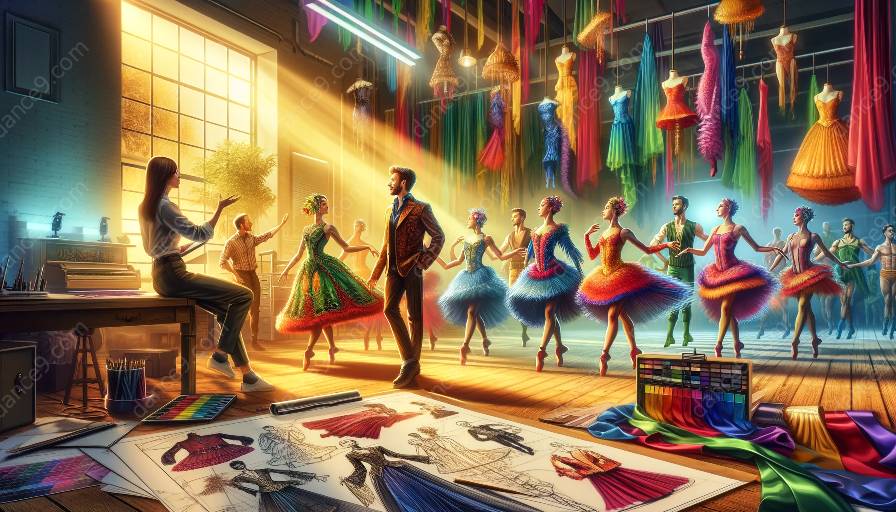Contemporary dance has continuously evolved, and with it, the trends in costume design have also undergone significant changes. The relationship between choreography and costume design plays a crucial role in the overall impact of dance productions. Let's delve into the current trends in costume design for contemporary dance and how they intertwine with choreography.
Integration of Technology and Fabric Innovation
In recent years, costume designers for contemporary dance productions have been incorporating technology and innovative fabrics into their designs. From interactive LED costumes to digitally printed textiles, technology has become an integral part of modern dance costume design. These advancements not only enhance visual appeal but also contribute to the choreographic narrative by creating dynamic and transformative costumes.
Minimalism and Abstract Concepts
Another noticeable trend in contemporary dance costume design is the shift towards minimalism and abstract concepts. Clean lines, monochromatic palettes, and geometric shapes dominate the designs, allowing the focus to remain on the choreography and movement. Abstract concepts in costume design often mirror the themes and emotions portrayed in the choreography, adding depth and symbolism to the performance.
Fluidity and Movement-Friendly Designs
With a greater emphasis on movement and athleticism in contemporary dance, costume designers are creating garments that prioritize fluidity and functionality. Stretchable fabrics, modular designs, and adaptable costumes allow dancers to execute complex choreography seamlessly. The integration of dance-specific design elements ensures that the costumes not only complement the choreography but also facilitate unrestricted movement.
Collaborative Approach to Choreography and Costume Design
Contemporary dance productions are increasingly embracing a collaborative approach between choreographers and costume designers. This collaborative process involves meticulous coordination to ensure that the costumes not only reflect the choreographic vision but also enhance the dynamics of the performance. Choreographers and costume designers work together to conceive cohesive visual narratives that harmonize with the movement vocabulary.
Statement Pieces and Theatrical Elements
Costume design for contemporary dance is witnessing the incorporation of statement pieces and theatrical elements that accentuate the dramatic essence of the performances. Elaborate headpieces, unconventional silhouettes, and avant-garde accessories add a theatrical dimension to the costumes, elevating the visual impact of the choreography. These bold design choices contribute to the overall storytelling and tonal nuances within the dance productions.
Sustainability and Ethical Practices
As the awareness of sustainable fashion grows, contemporary dance costume design is also embracing eco-friendly materials and ethical production practices. Costumers are exploring sustainable alternatives such as recycled fabrics, organic dyes, and zero-waste patterns to align with the ethos of environmental responsibility. Furthermore, the integration of ethical practices in costume design aligns with the underlying themes of contemporary dance, promoting social consciousness and ethical accountability.
Conclusion
Contemporary dance productions continue to push boundaries and redefine the intersection of choreography and costume design. The current trends in costume design reflect a fusion of artistic innovation, technological advancements, and thematic storytelling, ultimately enhancing the visual and performative experiences for both dancers and audiences.






































